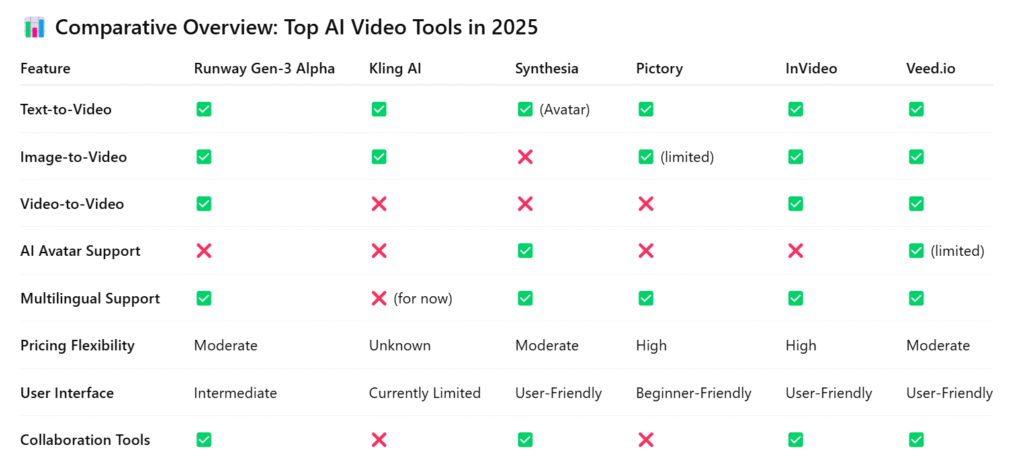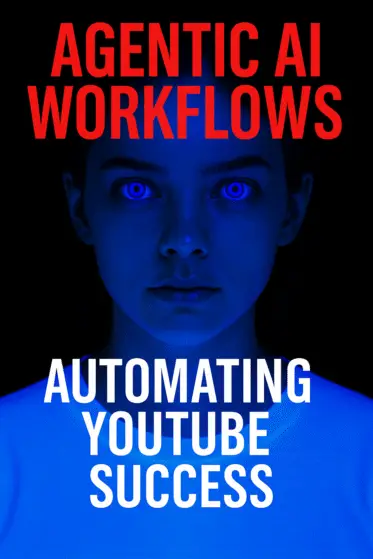If you’re producing video content for marketing, education, social media, or internal training, AI video tools can simplify and accelerate your workflow. But not all tools are built the same. Based on current popularity and practical application, here are ten platforms worth knowing about in 2025. These are tools I’d recommend to startups, SMBs, educators, and corporate teams alike.
1. Kling AI
Kling is getting a lot of attention because it allows you to generate high-quality, realistic videos from text, images, or prompts. It offers more control than most competitors and includes multi-modal support—text-to-video, image-to-video, and even video-to-video. Currently only available in Chinese, but global rollout is expected.
2. Runway Gen-3 Alpha
Runway’s Gen-3 Alpha is one of the most polished options available today. It’s used by creators in advertising, short films, and professional media who need advanced output but don’t have access to a post-production team. Key strengths: motion consistency, lighting realism, and prompt responsiveness.
3. Synthesia
Synthesia creates video presentations using AI avatars and voiceovers. It’s widely used in corporate training and onboarding because it reduces the need for live presenters. With support for 140+ languages, it’s a practical choice for global teams.
4. Pictory
Ideal for repurposing blog posts or scripts into videos. You input text, and it builds a visual story using stock footage and voiceover. It’s frequently used in content marketing and thought leadership.
5. InVideo
InVideo focuses on speed and usability for marketers. It includes templates, AI-generated scripts, and voiceovers. A good tool if you need to produce social content consistently, especially for platforms like Instagram, YouTube Shorts, or LinkedIn.
6. Veed.io
Veed combines AI editing features—like auto-subtitles and translations—with manual editing tools. It works well for small teams that need to edit and publish videos collaboratively from a browser.
7. Lumen5
Best for turning long-form articles into bite-sized video summaries. Lumen5 uses AI to match text with stock visuals and music. Often used by marketing departments and publishers.
8. Fliki
Fliki is strong in voice generation and narration across multiple languages. It’s used for YouTube automation, podcast repurposing, and e-learning content. The UI is simple, and it supports brand styling.
9. Elai.io
Elai specializes in avatar-based explainer videos. It’s used in corporate training and product tutorials. You can upload your own avatar or choose from a preset library. Strong on localization support.
10. CapCut
CapCut is a lightweight but surprisingly comprehensive tool, especially for influencers and content creators working in short formats. It includes smart effects, subtitle automation, and multi-platform optimization.
How to Choose the Right Tool
Here are a few things I tell clients to consider when selecting an AI video platform:
- Purpose: Are you using it for training, marketing, customer service, or brand storytelling? Each use case benefits from different features.
- Format Requirements: Need avatar-based delivery? Stock video? 9:16 social formats? Match the tool to the format you need.
- Language Support: Not all tools handle multilingual voiceovers well. If you’re serving global teams, check this first.
- Level of Customization: Some tools are fully templated; others give you more creative control. Know your limits—and your expectations.
- Integration: Can the output be embedded in your LMS, CMS, or CRM? Do you need API access or workflow automation?

The Bottom Line
These ten tools cover a range of needs—from fast-turnaround marketing to polished internal training and multilingual content. AI video generation isn’t about replacing creative teams. It’s about giving them leverage.
If you want help evaluating these tools based on your specific business model or industry, reach out via www.aileaderedge.tools. We help organizations make smart AI choices based on impact, not hype.
Happy strategizing,
Stay Visionary, Lead with an Edge!
P.S. This newsletter aims to provoke thought among leaders by blending historical context with forward-thinking analysis. It presents AI not as a threat but as an evolution in the dynamic world of digital influence.








